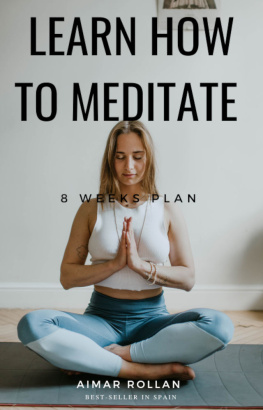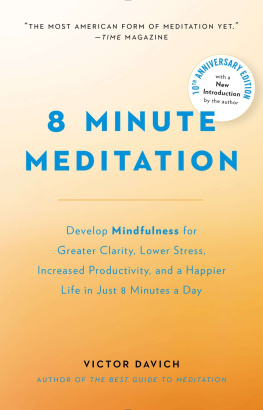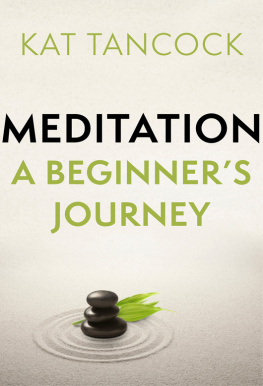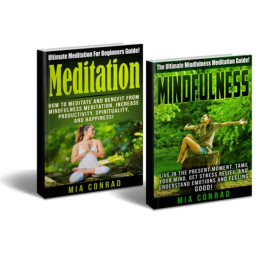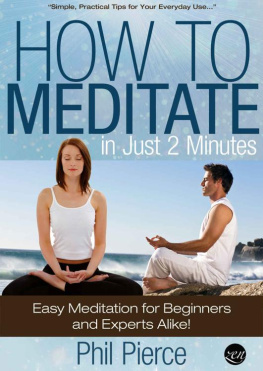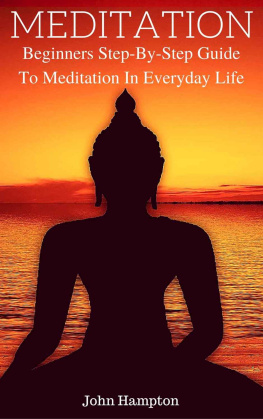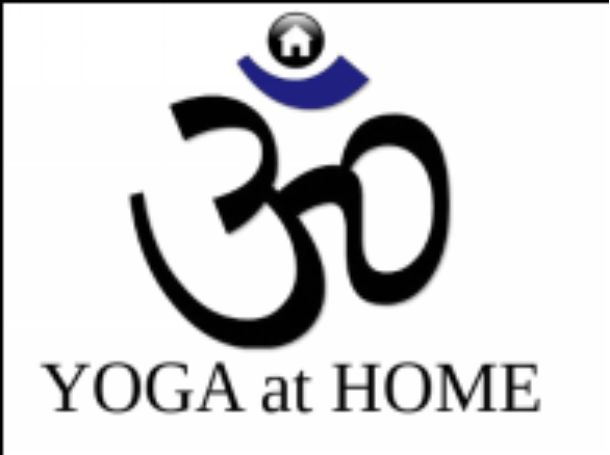Meditation techniques are as old as man, and today are particularly relevant to deal with the situation of our society, so advanced technologically and simultaneously so disconnected from our inner soul.
Our frantic day passes quickly, and we found time for almost everything, except to be with ourselves. If we are not busy working or doing any other activity, our idle mind will make us waste time in endless banalities, sparing us "looking inward".
This short book has the purpose of teach people to be with themselves, a minimum of 5 minutes a day, in silence, sitting quietly in a room.
We will learn very simple and very basic techniques, but with enough strength to consolidate our practice and form a new habit, which eventually will be as essential as our most basic needs... Not in vain, meditation is nourishment for the soul.
In this course you will find a training plan for 8 weeks, focused on acquiring the habit of meditate every day, which is the most important thing and the cornerstone of this discipline.
HOW TO USE THIS BOOK?
It is best to read this book until the end the first time. Then you can use the 8-week plan that you will find in the Annex, or better yet, you can download it and print it from the blog YOGA at HOME, and cross off the days as you go practicing.
You can read the chapters that explain the techniques several times, until you understand well. The first part of the book is theoretical, in the second part I explain the practical exercises to do during the 8 weeks of the plan.
It's important to follow properly all instructions and don't skip the program, it's designed to encourage the habit, and this requires time.
If during the 8 weeks you stop meditating one day, you'll have to start again from the beginning that week.
If you stop meditating for more than 7 days in a row, you'll have to start from the beginning again.
Be disciplined and follow the program. Mark with a pencil every day of progress and don't cheat, you only cheat yourself.
If you have any questions, you can contact me. You can find me on the blog YOGA at HOME or at my YouTube channel, Twitter or social networks.
WHAT IS MEDITATION?
Meditate in the Western context is associated with "thinking" or "consider any matter". In the religious sphere, in Christianity, meditate is, with prayer and contemplation, a way of seeking God through study and deep reflection on different Bible passages. But from this point of view, Eastern meditation is closer to the contemplative state that "meditation" itself.
In the Eastern context (yoga, Buddhism, Zen...), meditation is a practice of inner recollection, which uses mind as a tool to get a higher state of consciousness. The archetypal image of the meditator, is that of a man sitting cross-legged on "lotus position", with an expression of serenity.
What we will learn in this book will be the Oriental technique of meditation but we will meditate sitting on a chair (the Western mode).
Meditation is a process that involves several steps:
1. Relaxation.
2. Internalization of the senses.
3. Concentration of mind.
4. High state of consciousness.
Get a high state of consciousness can take a long time to certain people (almost everyone, to be honest), but meditation is the whole process that begins when we sat in the chair with the intention to meditate until we achieve that high state of consciousness.
Do not confuse, however, the act of meditating with the achieve a meditative state of consciousness. But even if we do not "meditate" (achieve that high state of consciousness), the process of meditation is very beneficial in itself, because it will help us to reduce stress considerably, will strengthen our will and train our mind making grow our ability to concentrate, among other things.
BENEFITS OF MEDITATION
There are numerous documented studies, made by scientific teams, praising the benefits of meditation, and they recognize it as a useful tool for:
- Stress reduction.
- Balance of the nervous and hormonal system.
- Regulation of blood pressure.
- Improvement of cerebral performance.
- Increase of intelligence and empathy.
- Help to overcome addictions.
Doctors are beginning to recommend the practice of meditation to their patients, and in a not too distant future, I am sure that meditation will become part of the daily routine of almost everyone.
Apart from the above mentioned, I want to emphasize two benefits that are very important to me:
- Development of will and self-control.
- Self-knowledge.
These two qualities will increases in us with regular practice of meditation.
WHY MEDITATE?
We may be interested in meditation for two reasons:
- For health reasons, seeking the benefits mentioned in the previous chapter.
- For spiritual reasons, trying to incorporate into our lives a practice that makes us look inward and fill us some existential void that so many of us felt at this time.
I think that meditation is very necessary nowadays, for both reasons. Stress and its derivatives are the evil of the century, and meditation is an effective weapon for that. On the other hand, our society has made great strides in science and technology, but has neglected other aspects, such as spirituality, religiosity and inner growth. Our look is completely directed outward, toward the material; the great religious institutions are reeling, and have increasingly less influence and effectiveness to fill the existential void of our rationalistic minds.
It should be clarified that to meditate is not necessary to become to any religion... No need to be Buddhist or Hindu, or stop being a believer of another religion. Meditation is a neutral tool.
These two reasons, from my point of view, are enough to start meditating, but of course, not everyone will agree nor feel the need to start meditating; but you reader, if you have this book in your hands, you will feel surely motivated by one of those two reasons.
DIFFERENCES BETWEEN MEDITATION AND MINDFULNESS
Mindfulness has drawn much attention since its inception, not long ago, and it is increasingly being used as synonym of meditation.
Mindfulness means "full attention" and derived from the Vipassana meditation created by Buddha, which means the same thing: "full attention or consciousness." The difference is that mindfulness is detached from all philosophy, mysticism and religion.
That is, that meditation and mindfulness are the same in terms of technique, but the mindfulness has a totally practical approach, secular, applied to psychology (academic) and very consistent with the times and the mentality of Westerners.
This approach is very attractive to many people who do not believe in God or anything transcendent. Mindfulness becomes a kind of sport or discipline for the mind.
Traditional meditation is linked to 4 major trends:
- Yogic, greatly influenced by Hinduism.
- Buddhist and Zen (Japanese Buddhism), with their religious and philosophical concepts.

